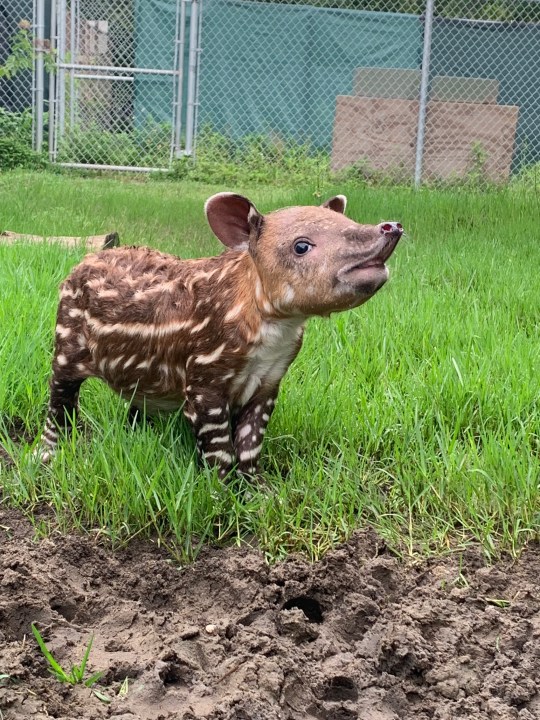NEW ORLEANS (WGNO) — Nearly three weeks after being born in Audubon Zoo to Ixchel and Tybalt, the male tapir calf weighed in at 31.5 pounds after entering the world weighing 19.4 pounds on July 2.
Full grown Baird’s tapirs can weigh up to 800 pounds, according to a press release from the Audubon Nature Institute.
The calf is still nursing but is beginning to try solid foods. His favourite treat? Bananas, of course.
“Mother and calf are currently bonding behind-the-scenes. The mother, Ixchel, is doing a fantastic job being attentive while also giving him opportunities to be independent,” according to the zoo’s animal care staff.
The baby is three-year-old Ixchel’s first offspring.
Ixchel came to Audubon Zoo from Franklin Park Zoo in 2019 as part of an Association of Zoos and Aquariums’ Species Survival Plan recommendation to breed with Tybalt, who arrived at Audubon in 2018 from Nashville Zoo. Species Survival Plans are collaborative conservation efforts among AZA-accredited institutions that recommend breeding based on genetic compatibility.
“Ixchel and the new calf are doing well,” said Audubon Zoo’s Vice President and General Curator Bob Lessnau. “Our veterinary and animal care teams are keeping a close eye to ensure both mother and calf are progressing. This is the first Baird’s tapir born at Audubon Zoo, and we are very excited to share his development with the community.”

Baird’s tapirs occur in lowland forests of Central and South America. According to the International Union for Conservation of Nature, they are considered an endangered species. While they are hunted for food and sport, their greatest threat to survival is habitat destruction due to logging and the clearing of land for agriculture and development.
The average gestation period for Baird’s tapirs is 13 months. The tapir’s long gestation period and low birth rate make it hard for wild populations to recover.
Similar to deer fawns, Baird’s tapir calves are distinctly marked with watermelon-like white stripes and spots, which help them camouflage in the dappled light of the rainforest. The markings begin to fade at five to six months of age.



